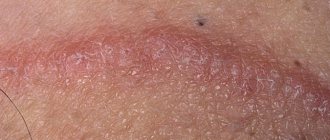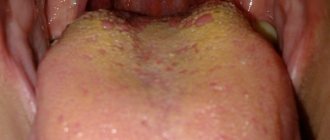Vaginal discharge is completely normal, as is salivation, the production of gastric juice or other secretions. Under normal circumstances, these secretions play a very important role in the life of the body - they cleanse the genitourinary organs and also prevent the penetration of various types of infections. What is important is that the nature of the secretion secreted by the vaginal glands depends directly on age, hormonal status, sexual activity and a number of other factors.
Vaginal itching and white discharge
In most cases, normal discharge:
- colorless or slightly whitish;
- have a slight sour smell (although they may not smell at all);
- not abundant;
- characterized by a mucous consistency.
Discharge and itching - causes
But in some cases, vaginal discharge may indicate problems with the female genitourinary system, or, less commonly, the development of one of several possible gynecological diseases. One of the unnatural conditions for the body is vaginal itching and white discharge, which can be either copious, mucous, or cheesy. And if there are quite a lot of reasons for the appearance of ordinary itching, then in this case - that is, when white discharge also appears - there are only a few. As a rule, similar symptoms appear with thrush (another name for the disease is candidiasis) - a widespread fungal infection that affects the epithelium of the genitourinary organs and tracts. There are other options, but let's start with thrush.
Character of discharge and concomitant diseases
Thrush is the main cause of itching and white discharge
Thrush is rightfully considered the most common gynecological disease. According to statistics, about 75 percent of all women during the reproductive period have encountered a similar problem at least once. The causative agent of the disease is fungi of the genus Candida, a yeast-like microorganism that under normal circumstances is present in the natural microflora of the epithelium of the genitourinary system. Candidiasis can develop due to the excessive proliferation of these microorganisms, as well as the imbalance of the reproductive tract environment caused by this phenomenon.
Discharge in women with thrush
There are a number of factors that contribute to more intensive proliferation of fungi, these include:
- weakening of the female body, deterioration of resistance to various types of infections;
- excessive douching;
- pregnancy;
- uncontrolled or prolonged use of antimicrobial and hormonal agents;
- synthetic underwear (or, alternatively, too tight);
- intestinal dysbiosis;
- external negative factors (for example, constant exposure to warm and damp rooms).
Causes and symptoms of thrush
In addition to itching and cheesy discharge, symptoms of the disease include:
- irritation and burning of the genitals, especially after urination, a hot bath or at night;
- hyperemia of the epithelium, the appearance of a white cheesy film or pathological plaque on it;
- increased pain and irritation during intimacy.
Unpleasant sensations with thrush
Note! Thrush does not threaten the health and life of the patient, but this illness is unpleasant and can lead to disturbances of an intimate or psycho-emotional nature. In addition, the development of candidiasis may indicate the presence of another, more serious pathology (diabetes, HIV, etc.).
Today, thrush is quite easy to treat. Mild forms of the disease can be cured with the help of local medications, while for more complex forms, general medications are prescribed. For local treatment, suppositories, tablets, etc., containing antifungal agents (ketoconazole, miconazole, etc.) are used. General medications used for thrush include fluconazole and itraconazole.
Preparations for thrush
Preparations for thrush - photos
Equally important is proper nutrition. It is advisable for patients to abstain from foods that promote the proliferation of yeast-like microorganisms (dairy products, sugar, mustard, coffee, mayonnaise, mushrooms, ketchup, yeast dough, sweet fruits, beer and other carbonated drinks, fatty and spicy foods). Instead, your diet should include boiled vegetables, cereals, lean meat, stale bread, kefir, and yogurt.
Features of nutrition for thrush
Note! If you cannot visit a doctor when symptoms appear, you can douche (no more than twice a day) to temporarily eliminate them. To prepare the solution, you can use soda or medications that restore microflora.
Douching can improve the patient’s condition somewhat, but the only right decision is to visit the hospital as soon as possible.
Douching for thrush
Video – Thrush
Yellow cheesy discharge
When the normal parameters of the vaginal microenvironment change, along with fungal microflora, other opportunistic microorganisms can multiply excessively. In this situation, they can either suppress the growth of fungi or form an association with them. If not only a fungal infection is involved in the inflammation, the appearance and consistency of the cheesy discharge may change.
The color of cheesy discharge is also often influenced by the nature of inflammation. Acute fungal inflammation is characterized by abundant white, curd-like discharge; when the infectious process becomes chronic, the discharge may turn yellow.
Sometimes patients, pointing out yellow, cheesy discharge, mean marks on their underwear. It should be noted that when talking about the color of discharge, doctors mean only “fresh” leucorrhoea flowing from the vagina. White cheesy discharge after prolonged contact with air often turns yellow and remains so on the laundry.
Yellow cheesy discharge can appear against the background of specific inflammation, that is, when pathogens of sexually transmitted infections - trichomoniasis and gonorrhea - enter the vaginal mucosa from the outside. They disrupt the natural vaginal balance and provoke the growth of fungi. Specific inflammation in the mucous membranes is also accompanied by pain, discomfort, difficulty urinating, a burning sensation in the vulva area or itching.
Sometimes, after yellow discharge, green, cheesy discharge appears, indicating purulent inflammation.
Bacterial vaginosis
This is not a sexually transmitted disease, because it worsens when the level of lactobacilli in the vaginal microflora decreases. This condition can be observed due to long-term use of antibiotic drugs, hormonal disorders, and abuse of spermicides as contraceptive protection. In more rare cases, this occurs due to long-term use of combined oral contraceptives.
Bacterial vaginosis
Typically, bacterial vaginosis can be transmitted sexually, especially with frequent changes of partners. Sometimes vaginosis accompanies another, more serious sexually transmitted disease. Because of this, all women diagnosed with vaginosis are prescribed a smear test for hidden infections.
Smear for hidden infections
Frequent douching can also lead to the development of this pathology, since the natural vaginal microflora as a result of these procedures is simply washed away, and with it lactobacilli disappear. Vaginosis is often confused with candidiasis, so a smear test is required to make the correct diagnosis.
Here are the main signs of the disease:
- itching;
- pungent “fishy” smell;
- white discharge (it may turn gray or green).
Manifestations and symptoms of bacterial vaginosis
Typically, the consistency of the discharge can be either thick and stretchy, or liquid and foaming.
Note! Thrush and vaginosis are not the same thing, since the nature of the occurrence of these diseases is different. Moreover, antifungal agents are not used to treat vaginosis.
Instead, a completely different treatment is carried out, consisting of two stages.
Stage 1 . First, the type of bacteria is determined and a course of appropriate antimicrobial agents is prescribed.
A drug for the treatment of vaginosis
Stage 2 . After this, lactobacilli are restored to their previous levels.
Both bacterial vaginosis and thrush are diseases that are most often encountered in gynecological practice and lead to the appearance of the symptoms described in the article. In both cases, timely treatment will avoid further complications (such as andoxitis). For this reason, if itching and discharge appear, you should immediately consult a doctor so that he can prescribe proper treatment.
Symptoms of candidiasis
The disorder is mostly diagnosed in women of reproductive age.
The main symptoms of the disease are itching and a white coating located in the vagina.
They can have a different character, be liquid or profuse with cheesy inclusions, thick and ointment-like, green-whitish. Their smell is sour and rather unpleasant. There is a relationship between the amount of discharge and the prevalence of the process - the more discharge and the more foul its smell, the more advanced the disease.
- One of the main signs is itching, which is especially severe when the vulva is affected. It can be constant or only bother you in the afternoon, late afternoon, or during sleep. The itching intensifies during menstruation and after a long walk.
- Upon examination, the gynecologist will see a white coating located on the walls of the vagina. The lesion can be pinpoint or larger, have a round outline or irregular shape, be localized remotely or merge with each other.
- In the acute stage of the disease, the mucous membrane is highly hyperemic and swollen, but in the chronic course it has a normal color.
At first, plaque is easy to remove, but as the disease progresses, this becomes difficult. Beneath it lies a hyperemic mucous membrane prone to bleeding. Severe thrush affects the labia minora and majora, the clitoris, and the external opening of the urethra. In the chronic course of the disease, these signs are less pronounced.
- Sometimes the disease occurs with hidden symptoms, for example, the itching is intermittent and the discharge is insignificant.
It is worth noting that the course of thrush is quite long. Sometimes it lasts for several months or even years. Periods of exacerbation most often occur during menstruation or intercurrent illness.
In the absence of timely treatment, the disease is sure to spread to nearby areas, for example, not only the groin, but also the upper inner thighs.
White plaque localized inside the vagina must be examined by a specialist. You need to contact a venereologist or gynecologist. It is not recommended to eliminate leucorrhoea and itching on your own. In addition, both women and their sexual partners should undergo therapy, although the disease is not usually transmitted.
The course of treatment is quite long and consists of a whole range of measures, which includes hormonal corrections, antifungal agents, and vitamins.
Other Possible Causes
In some cases, cloudy white discharge appears with gynecological diseases such as chlamydia, mycoplasmosis and ureaplasmosis. The cause of the development of these diseases are pathogenic microorganisms - chlamydia and mycoplasma. In most cases, vaginal discharge in women suffering from these ailments is not white, but dirty gray, and also has a strong, foul odor. Consequently, they (illnesses) can be distinguished from the thrush or vaginosis described above.
Other causes of discharge
But let us repeat that, regardless of the cause of the symptoms, they are a good reason to immediately visit a gynecologist. Waiting, as well as attempts at self-medication, often only aggravate the problem and significantly complicate subsequent treatment.
Curd discharge without odor
“Classic” curd-like discharge that accompanies a fungal infection has a mild sour odor.
However, a curd-like discharge with an odor does not necessarily indicate that the source of the infectious inflammation is exclusively yeast-like fungi. A sharp, stale “fishy” odor in cheesy discharge may appear after the association of Candida with Trichomonas or Gardnerella; such a combination of infections occurs in 20% of patients with fungal inflammation. At the same time, the leucorrhoea becomes even more abundant, acquires a yellow-green tint, and can foam.
Contrary to the erroneous opinion of many patients, curd discharge of fungal origin does not always provoke a pronounced odor. Its presence is largely determined by the composition of the vaginal microflora and the local level of acidity. The less they deviate from the norm, the less significant the smell of curd leucorrhoea.
Also, the severity of the smell of cheesy discharge is influenced by the nature of the inflammation itself. As a rule, exacerbations of a chronic fungal infection not only do not imply the presence of an odor in the discharge, sometimes the leucorrhoea itself does not change much - it may outwardly remain similar to “normal” ones and differ from them only in quantity.
Curd-like discharge without odor and itching may also be associated with another, non-fungal infection. Therefore, self-diagnosis, and especially self-medication, of cheesy discharge is futile. Often, several pathogens are involved in inflammation, and it is impossible to eliminate the disease forever using only antifungal agents.
Preparing for a visit to the gynecologist
How to prepare for a visit to the gynecologist
So, we found out that if you experience itching in the intimate area and white discharge, you should immediately consult a doctor. But the visit must be preceded by preparation, which consists of fulfilling several simple requirements.
- A day or two before the visit, you should not use any medications in the form of sprays or suppositories.
- You should not urinate for at least two hours.
- It is also recommended to abstain from sex for one or two days.
- In the evening, on the eve of visiting the gynecologist, you need to wash yourself thoroughly with warm water, preferably using baby soap.
- Finally, for one or two days before treatment, you should refrain from using antibacterial hygiene products, the same applies to douching.
What you need to know and do before visiting a gynecologist
After the examination, the gynecologist will take a smear for microflora, culture for aerobic/anaerobic bacteria, fungi, and write a referral for PCR diagnostics. In addition, it is advisable to do a stool test for intestinal dysbiosis and worms (this will help in making an accurate diagnosis). In the absence of additional research, but only on the basis of complaints, the doctor simply will not be able to make a diagnosis.
Curdled discharge during pregnancy
Pregnancy is considered one of the physiological causes of cheesy discharge. In almost 50% of pregnant women, mushrooms are sown from the vaginal discharge, and 30% have complaints of cheesy discharge with an odor, vaginal discomfort, a burning sensation and/or severe itching in the vagina. Dysuric phenomena are possible. More often, such symptoms appear at the beginning and before the end of pregnancy, that is, the third trimester.
The clinical picture of mucosal damage by Candida in pregnant women is ambiguous. Sometimes the presence of fungal microflora is limited only to cheesy discharge without accompanying subjective manifestations; an asymptomatic course of infectious inflammation is also possible.
How does pregnancy provoke the growth of fungal flora? For normal functioning, lactobacilli use glycogen, which is obtained from the superficial mucous layer of the vagina. The vaginal epithelium responds very sensitively to hormonal changes in the body, so the natural hormonal imbalance of pregnant women leads to the accumulation of glycogen in the mucous membranes. According to the feedback mechanism, excess glycogen leads to a decrease in the number of lactoflora and a change in pH, that is, comfortable conditions for the vegetation of fungal associations appear. The immune system of pregnant women is overloaded and is not able to independently correct the current negative situation, so mushrooms cause infectious inflammation.
Curdled discharge in pregnant women often does not threaten their health, however, in conditions of impaired immune defense, fungi are able to move towards the developing fetus, so the fungal infection must be cured in a timely manner.
Summing up
You should consult a doctor if you are bothered by itching and discharge.
We decided on two important points:
- if itching occurs along with white discharge (and not on its own), then urgent help from a specialist is required;
- self-medication is a common mistake that can lead to a worsening of the patient’s condition.
When should you see a doctor?
As mentioned above, not everything that can be discharged from the vagina should cause alarm, unless it is itching and odorless yellow discharge.
If the discharge in flakes is accompanied by itching and burning, you should immediately go to the gynecologist and look for the cause.
Discharge with an unpleasant odor and itching may indicate bacterial vaginitis, gardnerellosis, chlamydia, trichomoniasis, ureaplasma and other sexually transmitted diseases with similar symptoms. Therefore, visiting a doctor in such cases is the wisest decision.
Preparations for itching
The medications that can help in this case are different, it all depends on the cause that caused the symptoms. If in some cases you can simply change the intimate care product, then in another case it may be antibacterial therapy with many tests and procedures. For the latter, the doctor usually prescribes several types of medications: suppositories (usually used every night until the discomfort subsides), ointments (used daily, can be supplemented with other medications as prescribed by the doctor).
The medications themselves and their active substances are recommended by the doctor depending on the results of the analysis and the individual characteristics of the patient. The course of the disease itself is a significant factor. Recently, gynecologists have spoken very highly of vaginal creams, because they spare the delicate microflora of the female genital organs, although they are slightly less effective than suppositories. But foams and gels have an even weaker effect than ointments. Remember that only a doctor can prescribe treatment; do not self-medicate with medications, you can aggravate your problems and undermine your health.








